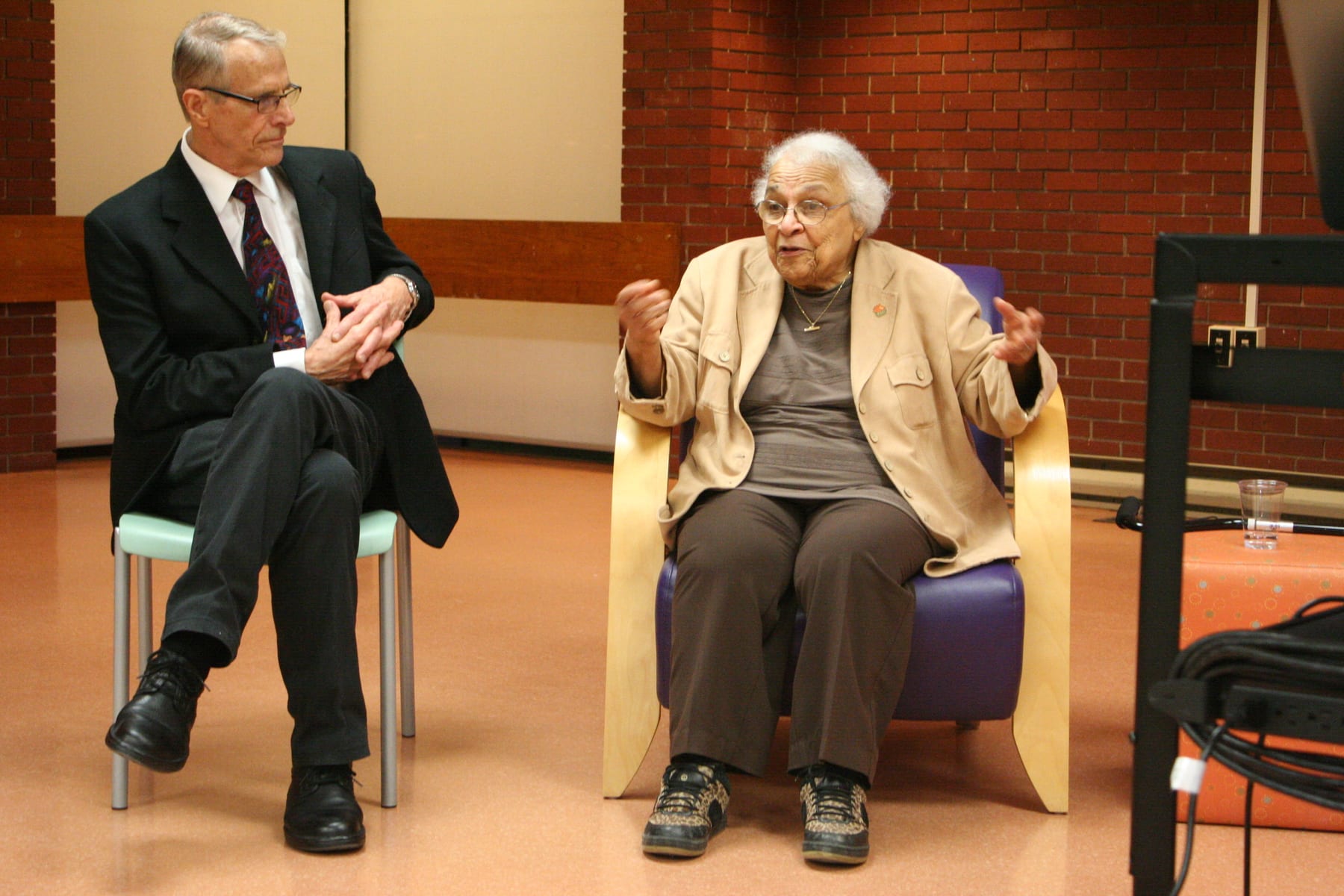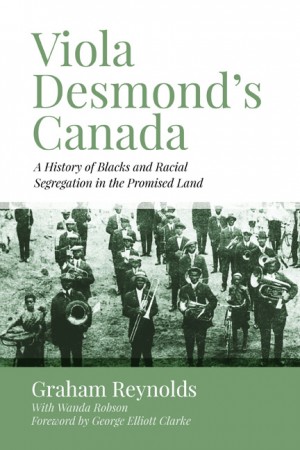KJIPUKTUK (HALIFAX) – Here’s a little known fact. Well into the fifties Nova Scotia, and Canada for that matter, was so deeply racist and so completely segregated you’d think you were living in South Africa under apartheid.
In all of Halifax there wasn’t a hotel or restaurant to be found that would serve African Nova Scotians. You could go to a Fish and Chips for take out, but that was it.
The New Glasgow movie theatre with its segregated seating, the one where Viola Desmond was arrested, wasn’t the exception, it was the rule in Nova Scotia. Segregation was sanctioned by the courts.
Many professions were closed off. A career in nursing? Forget about it. No Blacks allowed.
There was nothing subtle about that kind of racism. And it isn’t that long ago. Yet this history of racism in Canada is not talked about much.
Now there is book that wants to at least begin to fix that.

Viola Desmond’s Canada. A history of Blacks and Racial Segregation in the Promised Land, written by Cape Breton University professor Graham Reynolds, focuses on racism as experienced by Blacks in Canada through the centuries.
It hopes to find readers among the general public, and among high school and university students enrolled in Black Canadian Studies and Canadian history classes.
For many the book will be an eye opener.
We tend to compare our own Canadian flavour of racism with what happened (happens) in the Deep South of the United States. No cross burnings here, no lynchings, or at least not all that many, so how bad can it be?
That notion is factually incorrect, Reynold’s book suggests.
In the late 1920s the Ku Klux Klan thrived in Canada, especially in Saskatchewan. It was quite a force in Eastern Canada as well, Reynolds suggests, with 17 active Klan lodges in New Brunswick alone, and with leaders who enjoyed easy access to government politicians.
Meanwhile, the government was actively preventing Blacks from immigrating, and deporting recent arrivals.
“Persons of negro origin from the West Indies are considered by the Department as persons likely to become a public charge,” writes an immigration officer sometime in 1916, echoing official policy.
And even if the Canadian flavour of racism at the time were a bit more subdued than in the United States, it was every bit as devastating in its consequences.
That message often is missing in the way the history of Blacks in Canada gets told.
We hear about the Underground Railroad, and the courage and sacrifice it took to guide American slaves to freedom in Canada, but not about the godawful poverty and discrimination that awaited these freed slaves on arrrival in Canada.
Slavery for that matter was common both in New France and later on under British rule.
Reynolds quotes an advertisement in the 1752 Halifax Gazette announcing the sale of six slaves, including “a negro wench … creole born … capable of doing all sorts of work …washing, ironing cookery, including every other thing that can be expected from such a slave.”
This advertisement is subtly suggestive of the kind of sexual exploitation female slaves were subjected to, Reynolds writes.
Nor did all this nasty stuff happen a long time ago.
It was 1946 when Viola Desmond was arrested for sitting in the Whites Only part of a New Glasgow movie theatre. When Desmond appealed her conviction, she lost. Segregation in Nova Scotia theatres and restaurants only became illegal in 1959.
More than just a chronological overview, the book offers case studies, documents, and interviews. Its scope is Canada-wide, but with the author being from Nova Scotia there is lots of local content.
Halifax native George Elliott Clarke wrote the foreword, and Wanda Robson, sister of Viola Desmond, contributes a fascinating chapter about her own daily encounters with racism in Nova Scotia.
An interview with Nova Scotia civil rights activist Pearleen Oliver (1917-2008) is particularly striking. Oliver was an active supporter of Viola Desmond, co-founder of the Nova Scotia Association for the Advancement of Colored People (NSAACP) and tireless fighter for equal educational opportunities for African Nova Scotians.
The interview is just one of many reminders offered in the book that resistance is very much part of the history of Black oppression in Canada.
For every wrong there were people organizing and speaking up in protest. For every little girl discriminated against in school there is a mom who complains to the principal and doesn’t take no for an answer.
“Dr. Oliver and myself, we just said, Well, that’s what we’re here for. We’re born for this. It doesn’t matter,” Oliver replied when asked why she never stopped fighting.
Viola Desmond’s Canada. A history of Blacks and Racial Segregation in the Promised Land. By Graham Reynolds, with Wanda Robson. Foreword by George Elliott Clarke. Fernwood Publishing.




